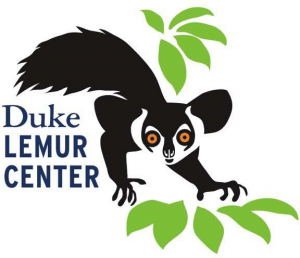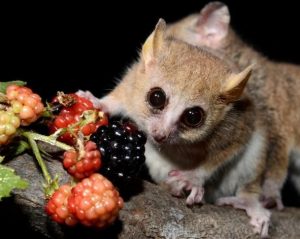By Whitney Bell
From ‘Crikey! It’s the Irwins!,’ to ‘Wild Kratts,’ to ‘Planet Earth,’ TV shows and channels like Animal Planet featuring animals are not in short supply. Those of us who were growing up in the mid-90s might remember a PBS TV show called Zoboomafoo which starred brothers Chris and Martin Kratt (the creators of the currently airing TV show “Wild Kratts”) and a leaping lemur friend of theirs named Zoboomafoo. Each episode began with Chris and Martin calling Zoboomafoo to come meet them at their clubhouse, aptly named Animal Junction, where they gave him a snack such as mango slices or garbanzo beans. Up until that point in the show, Zoboomafoo was portrayed by a real lemur, and after his snack, a similar-looking puppet was used for the remainder of the episode.
Ok, that’s cool and all, but what does this have to do with science and North Carolina? Well, it turns out that Zoboomafoo lived right here in North Carolina! Zoboomafoo’s real name was Jovian, and he lived at the Duke Lemur Center on the campus of Duke University in Durham, North Carolina.
The Duke Lemur Center (DLC) houses the largest group of lemurs in the world outside of their native island of Madagascar and is home to more than 200 lemurs from 14 different species including the crowned lemur, fat-tailed dwarf lemur, grey mouse lemur, ring-tailed lemur, blue-eyed black lemur, and the Coquerel’s sifaka (the species of lemur that Jovian was)! Jovian passed away in 2014, but his family and descendants continue to live at the DLC. This past January, Jovian’s family increased by two: a nephew and a grandson were born!
Aside from participating in children’s educational TV shows, the DLC has a lot of other important functions. Their mission is to “advance science, scholarship, and biological conservation through interdisciplinary non-invasive research, community-based conservation, and public outreach and education,” and they are accomplishing their mission in a variety of ways.
The research that the DLC conducts with the lemurs is all non-invasive. This means that no harm comes to the animals involved. One exciting example of their research focuses on mouse lemurs! The grey mouse lemurs of the DLC are the stars of this research project. Teacup-sized and weighing only a few ounces, the grey mouse lemurs can develop neurological symptoms, such as the accumulation of amyloid proteins in the brain, which we see in Alzheimer’s disease in humans. Because both lemurs and humans are primates, lemurs are genetically more similar to humans than the more common research animal models such as mice and rats. Brain scans of the mouse lemurs as they grow older could help unravel some clues about Alzheimer’s disease progression. The information gained from these studies could help identify people who are more at risk for developing the disease as well as identify new strategies and treatments to slow disease advancement.
Apart from their exciting research, the DLC plays other important roles in the lives of lemurs and conservation biology. According to the DLC, lemurs are the most endangered group of mammals on the planet. Nearly every species of lemur is endangered. To prevent their extinction, the DLC participates in both breeding programs and in habitat conservation programs to help save these important (and adorable) primates.
When social distancing ends and school is back in session, suggest a class field trip to the Duke Lemur Center to your science teachers if you want to see these amazing animals that live right here in the Triangle!
All images in this article were used with permission from the DLC.
Edited by Yogitha Chereddy and Meryem Ok
Approved by Sara Clark (Duke Lemur Center)




